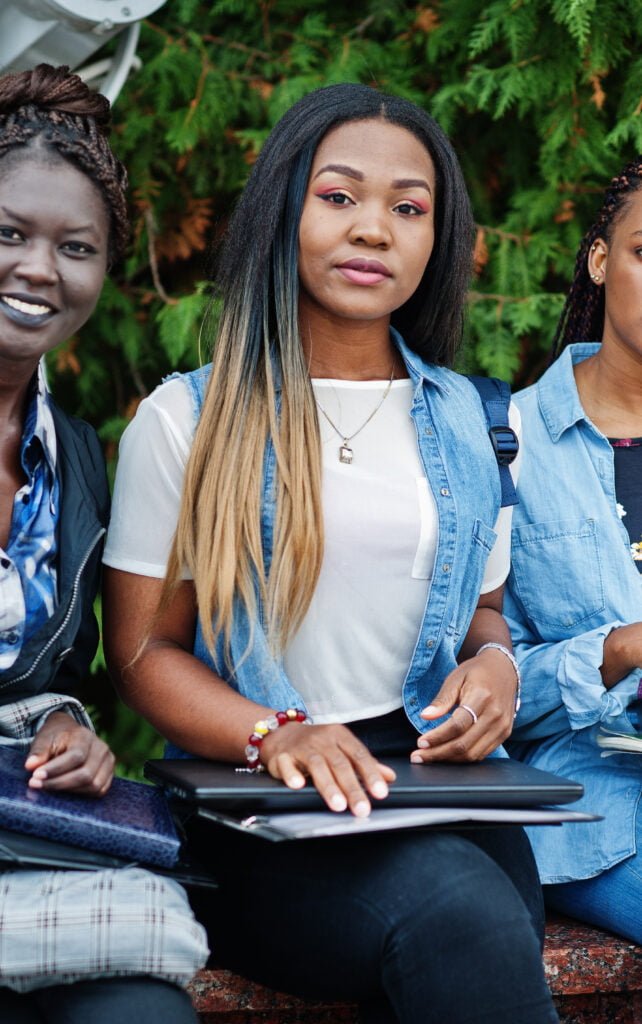
Reducing non-schooling, by Joël N'Dri Assamoi

The objective of this thesis is to reduce illiteracy and the non-schooling rate of girls in particular. Also, this requires that, upstream, the public authorities develop effective strategies in favor of universal and inclusive primary education. Unfortunately, the various international commitments made in favor of universal primary education have not always proved sufficient. This is the case in sub-Saharan Africa. (Jomtien in 1990; Dakar World Forum in 2000; United Nations Assembly in 2000 for the MDGs, etc.).
International conferences and forums have enshrined the right to education, especially that of girls, as an inalienable right. Despite texts and conventions, not all of them have yet achieved full enrollment of children of school age. Thus, girls remain largely discriminated against (Cf. the Pro-women/twese hamwe site, 2000). The so-called developing countries are particularly affected.
It should be added that the number of children enrolled in primary school has increased. The percentage of children who have never attended school has fallen (UNESCO, 2015). Thus, we must recognize that the out-of-school population remains large. Many girls do not have access to the primary cycle.
“States Parties to this Charter shall take all appropriate measures with a view to achieving the full realization of this right and, in particular, they undertake to take special measures to ensure that female children gifted and disadvantaged have equal access to education in all social strata”.
Article 11, paragraph 3, 5e rank of the African Charter on the Rights and Welfare of the Child
Thus, the African countries that have signed this Charter undertake to enroll all girls of school age.
The right to education
Furthermore, the right to education has become one of the important leitmotivs of recent decades. This appears in international conventions:
- the Universal Declaration of Human Rights of 1948;
- the International Convention on the Rights of the Child of 1989;
- the Convention on the Elimination of All Forms of Discrimination against Women of 1981.
The right to education is enshrined in these agreements as a fundamental right. The 1981 Convention details the framework for Education For All. Boys and girls have the same chances of access to education there despite persistent stereotypes.
“education must once again become one of the essential values of our world, it must shine again, it must impose itself as a source of happiness, fulfillment and hope. »
Mandela, 1996.
Efforts have been made against non-schooling
In addition, efforts have been made to reduce the rate of girls not attending school. And also to improve the school education system and make this system more efficient.
On the one hand, we highlight the efforts made in education as well as the various reforms introduced in the Ivorian education system. However, despite this, the rate of non-schooling for girls has not risen. It fell short of the hoped-for aspirations and expectations. According to Ivorian national statistics, many girls of school age were unable to attend school in 2016-2017.
On the other hand, the non-enrollment of girls is the result of multiple factors. The difficulties are at the family, economic, legal and social levels. Of course this is an international problem affecting many countries. However, the rapid evolution of this phenomenon in Côte d'Ivoire and particularly in the Gontougo region is worrying.
Hence our thesis: "The non-schooling of girls in Côte d'Ivoire: the case of the Gontougo region".
The search for explanatory factors
Our thesis aims to research the explanatory factors of the non-schooling of girls in the Gontougo region. To better understand the problem, the choice fell on an analysis emphasizing several axes.
Du point de vue organisationnel, l’étude comprend trois parties réparties en six chapitres. Nous suivons le principe de la rédaction scientifique IMRED ( Introduction, Matériels et méthodes, Résultats et Discussions).
The first part deals with the theoretical and methodological framework. Two chapters make up this part. Chapter I discusses the theoretical framework of the study. Chapter II discusses the methodological framework.
The second part presents results by highlighting the actions of actors in the education sector. It includes Chapter III, which illustrates the explanatory factors for the low enrollment of girls according to the actors. Chapter IV is dedicated to the action of these actors to keep girls in school. These actors are mainly the State and NGOs in the field.
Finally, the last part engages us in the discussions of the obtained results. These discussions will make it possible to verify the hypotheses with a view to their evaluation. Chapter V first discusses the choice of indicators and then the analysis of the results. And chapter VI which is related to strategies for keeping girls in school. A concluding note will end this writing.
Date of first thesis registration : September 1, 2021
Doctoral School : LECLA – Letters, Communication, Languages, Arts
Supervisor : Thibaud HULIN, University of Franche-Comté, France
Co-director of the thesis: Opadou KOUDOU, Félix Houphouët Boigny University of Abidjan Cocody, Ivory Coast
Laboratory: ELLIADD – Editions, Languages, Literature, Computers, Arts, Didactics, Speeches
